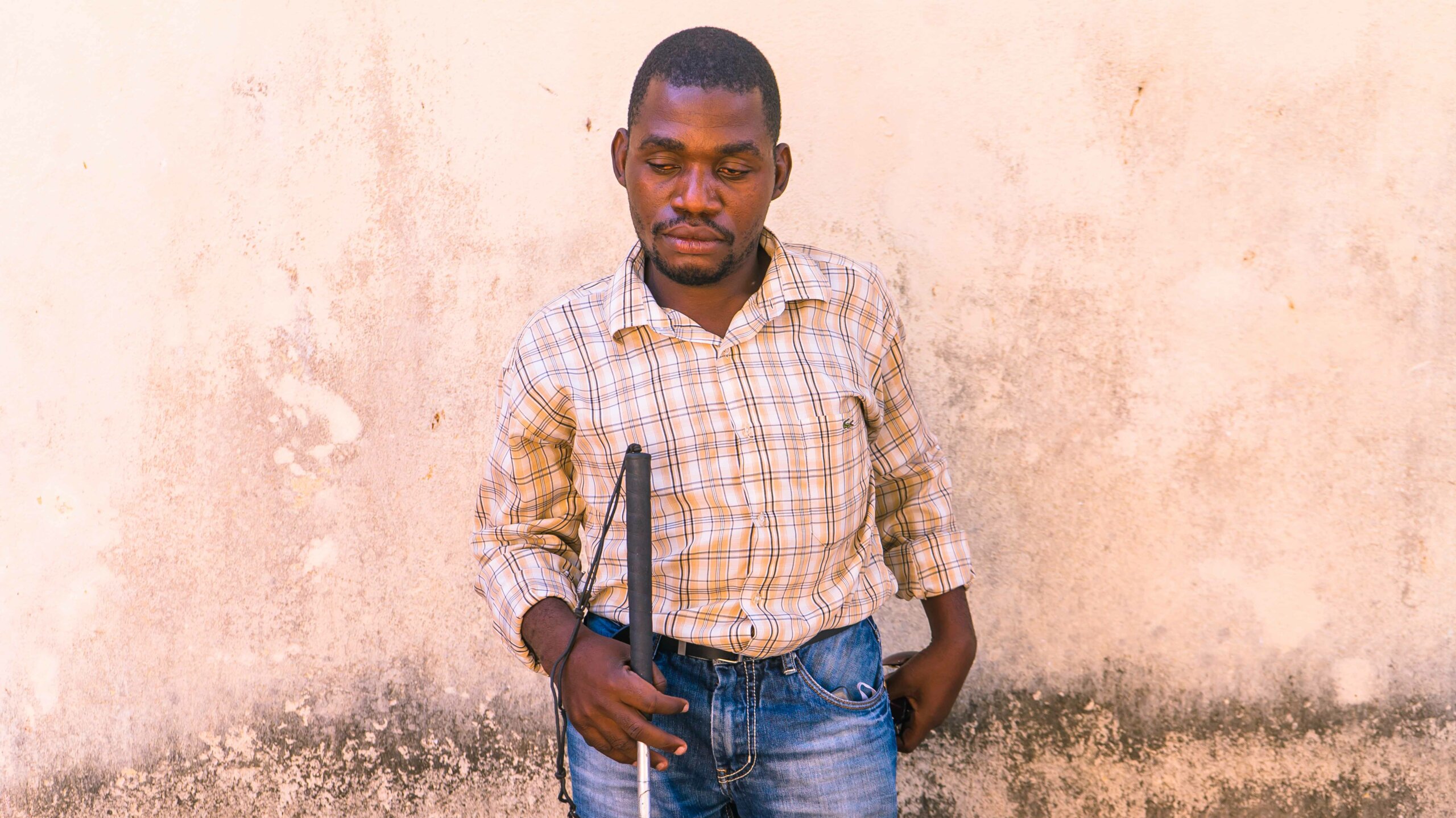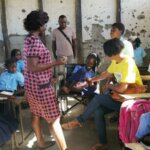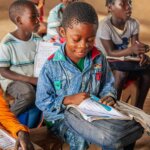- Inclusive Education
This World Teachers’ Day, we ask: what’s the best way to make sure all children get the education that is their right?
If there’s one thing we’ve learned from the coronavirus pandemic, it’s that we owe a lot to teachers. As millions of parents struggled under lockdown to home-school their children, social media platforms thrummed with posts paying homage to the hard graft that teachers put in every day.
The subtext of all those tributes was this dismal truth – that for everything teachers do, they get precious little in return. That’s not just a problem for teachers but for all of us. We all lose when teachers are undervalued.
In 2015 governments around the world pledged to provide inclusive, equitable education for all by 2030. They did this because every child has the right to an inclusive, quality education. Yet for millions of children, especially those with disabilities, education is still out of reach – a fact magnified by COVID-19.
Nafisa Baboo, Light for the World’s Director of Inclusive Education
A chronic lack of teachers
More than 70% of countries in sub-Saharan Africa face acute shortages of primary school teachers. Shortages at secondary level affect 90% of countries there– the largest teacher gap in the world. If the region is to keep up with its rapidly growing youth population, it will need to recruit 17 million new teachers by 2030.
The result of this deficit is a high – in truth untenable – pupil-teacher ratio. Malawi has the most dramatic teacher gap in the world, with one teacher for every 70 pupils. Across the region, overcrowded classrooms in rundown buildings are the norm.
Neighbouring Mozambique is not so different, as teacher trainer and former teacher Linete Ndachaica David Mucama (pictured above) observes. “It’s too complicated to monitor all the children, because it’s just 45 minutes for 75 to 120 children,” she says. “Some children come to school having eaten nothing during the day.”
The coronavirus pandemic has exposed the weakness in the system even further. With children having to learn from home, it’s been clear that many countries in the region are not equipped to roll out distance learning.
Pupils with disabilities have been most disadvantaged by the COVID outbreak. The most likely to be excluded, they face further setbacks because learning resources or technology are not accessible. At the same time, many have lost the specialist support they depend on, because of the pandemic.
Under-valued and under-resourced
Even where governments prioritise education, they often fail to allocate enough money to recruit and train the teachers they need.
Teachers are thus under-valued, under-resourced, and struggling to make a living wage. One out of every three teachers in sub-Saharan Africa lacks adequate training. The net result is that many lack the skills and knowledge to teach children with disabilities, who are the most likely to be left behind.

“There is a lot to do to make inclusive education a reality in our country,” says Miguel Domingos, aged 30. Miguel, who is blind, is currently completing a university teacher training course in Mozambique. “There are a lot of children without access to education because the teacher says they don’t know how to deal with their disability.”
As Miguel makes clear, education can only be truly inclusive when it reaches everyone, including those who are furthest behind.
Invest in teachers
With just 10 years left to meet their goal of inclusive education for all, governments have no time to waste. In a new joint report, NGOs ActionAid, Education International and Light for the World are urging them to make smart financial choices that prioritise investment in education.
This means allocating enough money to recruit and train teachers and support staff, thus reducing the pupil-teacher ratio. Governments must also ensure that new and existing staff have the skills to teach everyone, including pupils with disabilities.
Training young people with disabilities as teachers is crucial. They not only bring lived experience to the classroom, but have huge power as role models to challenge negative stereotypes around disability.
Teachers need supportive working conditions. This means additional resources to provide specially designed learning materials. It also means that governments must adapt the curriculum to the needs of a diversity of learners while also reflecting that diversity.
A support team of specialists is vital – speech and hearing therapists, specialist teachers who know braille and sign language and social workers. Finally, adequate pay, decent working conditions and incentives for teachers should be prioritised to keep teachers skilled up and within the profession.
“Ultimately, teachers are the bedrock of inclusion,” says Nafisa Baboo.
“They’re the people who can make it happen. When children have the teachers they need, they can fulfil their potential, because with quality teaching comes quality learning – and quality outcomes.”





